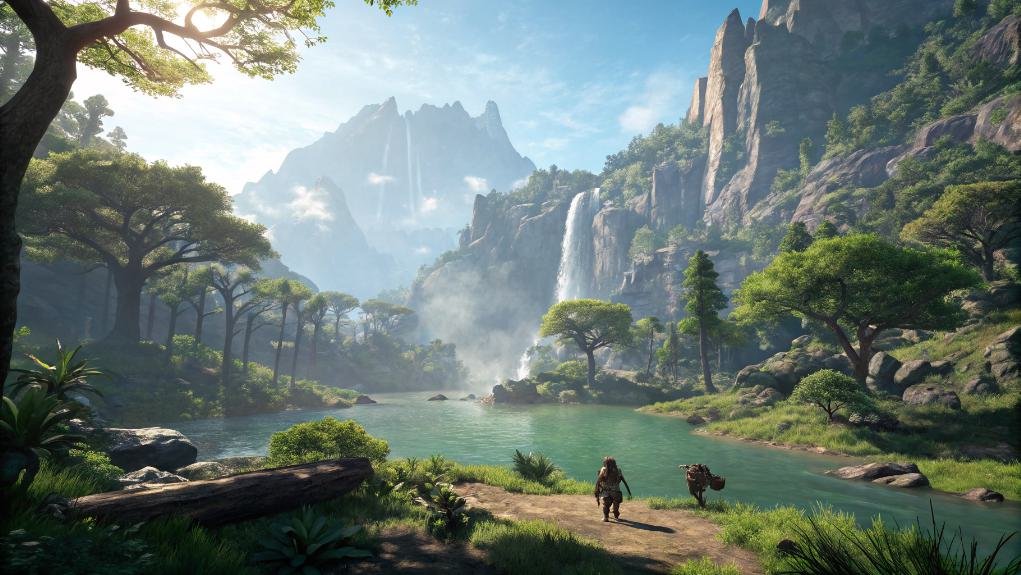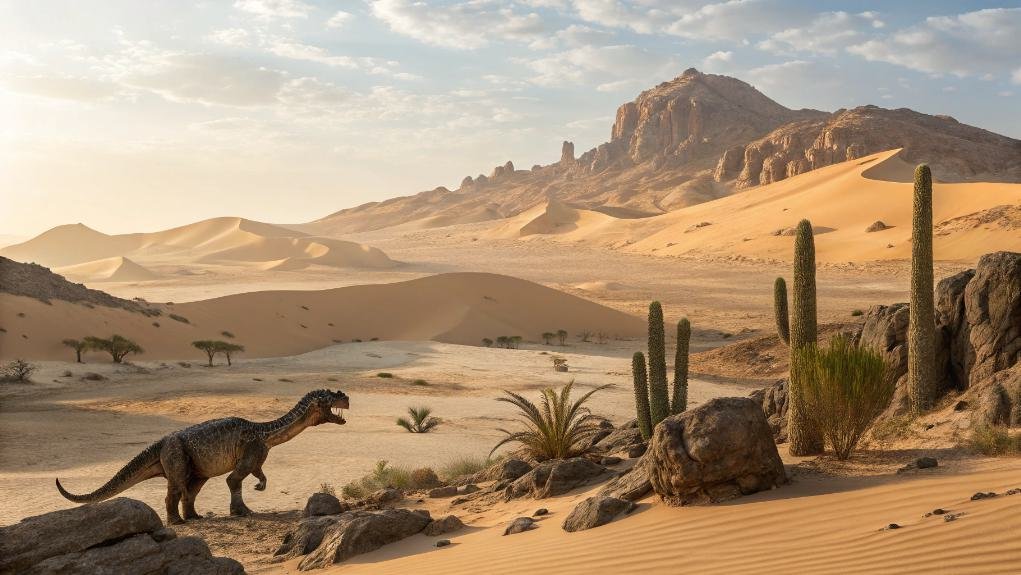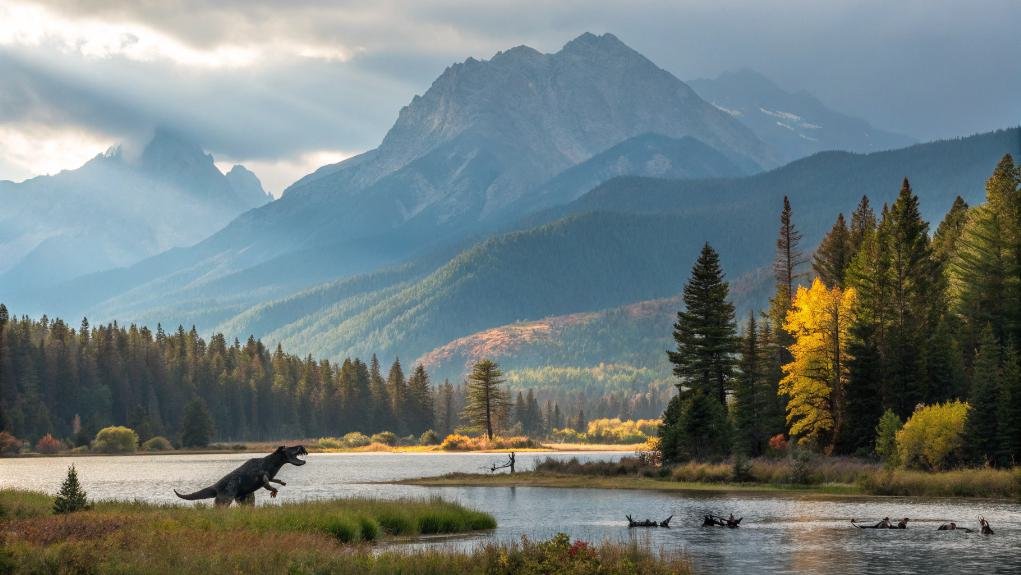In Monster Hunter Wilds, a variety of large monsters inhabit diverse ecosystems. Forests shelter ambush predators like Great Jagras and Pukei-Pukei, while the arid desert hosts agile monsters adapted for extreme conditions. Mountain habitats feature formidable creatures like Thunderjaw and Frostfang, showcasing unique territorial behaviors. Oceanic depths reveal striking leviathans like Lagiacrus and cunning ambushers like Nerscylla. Each monster's adaptations create thrilling challenges for hunters. Discovering their specific traits opens up exciting tactical possibilities for those ready to explore.
Key Takeaways
- Large monsters in Monster Hunter Wilds are categorized by their habitats: Forest, Desert, Mountain, and Ocean.
- Each habitat features unique monsters like Great Jagras in forests and Lagiacrus in oceans.
- Understanding monster behaviors, such as territoriality and ambush tactics, is crucial for effective hunting.
- Environmental factors, including visibility and habitat conditions, influence monster behavior and hunter strategies.
- Mastering habitat knowledge enhances tracking techniques and increases hunting success against large monsters.
Overview of Large Monsters in Monster Hunter Wilds

In Monster Hunter Wilds, the large monsters serve as formidable challenges that test a hunter's skill and strategy. Each creature exhibits unique large monster behaviors, from aggressive charging to stealthy ambush tactics, requiring hunters to adapt their approach.
Mastering monster tracking techniques becomes essential, as hunters must interpret signs like footprints, broken foliage, and sounds to locate their quarry. Understanding a monster's habitat and movement patterns allows for effective planning and execution of hunts.
Forest Habitat Monsters
The forest habitat in Monster Hunter Wilds teems with a variety of large monsters, each adapted to thrive among the dense foliage and towering trees. These creatures exhibit unique behaviors shaped by forest ecosystem dynamics, influencing their interactions with one another and their environment. Observing their behaviors reveals patterns of territoriality, foraging, and mating rituals, all essential to survival in this complex habitat.
| Monster Name | Behavior | Habitat Preference |
|---|---|---|
| Great Jagras | Ambush predator | Dense underbrush |
| Barroth | Mud-dweller | Wet, marshy areas |
| Pukei-Pukei | Herbivore | Near water sources |
Understanding these forest monster behaviors enriches the hunting experience, adding depth to the vibrant ecosystem.
Desert Habitat Monsters

While traversing the arid expanses of the desert habitat in Monster Hunter Wilds, players encounter a striking array of monsters uniquely adapted to survive in extreme conditions.
These creatures exemplify the intricate balance of the desert ecosystem, showcasing remarkable monster adaptations that enhance their survival.
Some key adaptations include:
- Camouflage: Many monsters blend seamlessly into the sandy landscape, evading hunters.
- Heat Resistance: Certain species have developed thick skin or scales that protect them from scorching temperatures.
- Water Conservation: These monsters effectively store and utilize water, allowing them to thrive in scarce environments.
- Agility: Enhanced speed and agility enable them to navigate shifting sands and escape threats quickly.
Together, these adaptations illustrate the fascinating resilience of life in the desert.
Mountain Habitat Monsters
In the rugged peaks of the mountain habitats, players encounter a unique array of formidable monsters, each adapted to their harsh surroundings.
These creatures thrive in the challenging conditions, showcasing distinctive traits that influence their behaviors and hunting strategies.
Understanding these habitat characteristics is essential for hunters aiming to effectively track and conquer these mountain-dwelling beasts.
Notable Mountain Monsters
As hunters traverse the rugged terrains of mountain habitats, they encounter a diverse array of formidable monsters that thrive in these elevated environments.
These creatures exhibit unique behaviors influenced by their mountain ecosystems, making them both challenging and intriguing to hunt.
Notable mountain monsters include:
- Thunderjaw – Known for its electrifying attacks and territorial nature.
- Frostfang – A cunning predator that utilizes stealth and icy breath to ambush prey.
- Rockbreaker – A massive beast that can manipulate the terrain, creating obstacles for hunters.
- Skyclaw – Agile and aerial, this monster swoops down to strike with precision.
Each of these monsters showcases distinct behaviors, demanding hunters adapt their strategies to succeed in these harsh landscapes.
Habitat Characteristics
Mountain habitats present a unique set of characteristics that markedly influence the behavior and survival strategies of their resident monsters. The steep cliffs, rocky terrains, and varying elevations create a rich habitat diversity that supports a range of species.
These conditions foster specialized adaptations, allowing monsters to thrive in challenging environments. For instance, some species may develop enhanced climbing abilities or camouflage to navigate the intricate landscape.
Environmental impacts, such as temperature fluctuations and precipitation patterns, also play a vital role in shaping the ecosystem. The presence of seasonal weather patterns can dictate food availability and mating behaviors, further influencing monster interactions.
Understanding these habitat characteristics is essential for thorough monster study and effective conservation strategies in mountainous regions.
Hunting Strategies
While traversing the rugged terrain of mountainous habitats, hunters must adapt their strategies to effectively track and engage with the unique monsters that inhabit these regions.
Successful monster tracking requires keen observation and a solid grasp of effective hunting techniques. Here are four essential strategies to employ:
- Utilize Terrain: Leverage high ground for a better vantage point to spot monsters.
- Sound Cues: Listen for distinct roars or movements that can indicate nearby creatures.
- Footprints and Signs: Identify tracks and other environmental clues to predict monster movements.
- Patience and Timing: Take time to observe behavior patterns, ensuring a well-timed attack.
Swamp Habitat Monsters
Swamp habitats teem with unique monsters that thrive in their murky, waterlogged environments. These creatures exhibit fascinating adaptations that enable them to survive in the challenging conditions of swamp ecology.
For instance, many possess specialized limbs that allow them to navigate through thick vegetation and mud, while others have developed camouflage to blend seamlessly with their surroundings. The abundance of stagnant water also encourages certain monsters to evolve traits like enhanced swimming abilities or respiratory adaptations for low-oxygen environments.
This intricate balance of life showcases how swamp monsters not only dominate their habitat but also play crucial roles in the ecosystem, contributing to nutrient cycles and supporting diverse flora and fauna. Each encounter reveals the astonishing complexity of these swamp-dwelling giants.
Ocean Habitat Monsters

In the vast expanse of the ocean, unique monsters present both challenges and opportunities for hunters.
Understanding the notable ocean monsters and their behaviors is essential for crafting effective hunting strategies.
Notable Ocean Monsters
As players plunge into the vast oceans of Monster Hunter Wilds, they encounter a diverse array of formidable ocean monsters that challenge their skills and strategies.
These creatures play essential roles in the game's ocean ecology, enriching the underwater exploration experience.
Notable ocean monsters include:
- Lagiacrus – A leviathan that commands lightning, striking fear into those who dare approach.
- Zinogre – A thunderous beast that harnesses the power of electricity in its attacks.
- Nerscylla – A cunning arachnid that uses stealth and speed to ambush unsuspecting hunters.
- Brachydios – A massive creature known for its explosive slime attacks, creating chaos in battles.
Each monster presents unique challenges, making underwater encounters thrilling and strategic.
Oceanic Hunting Strategies
Mastering the art of hunting in the oceanic expanses of Monster Hunter Wilds requires a deep understanding of the unique behaviors and habitats of its aquatic monsters.
Effective hunters analyze oceanic ecosystems, recognizing that each monster exhibits distinct patterns. Utilizing underwater tactics like stealth and bait can turn the tide in a hunt. For instance, deploying traps near coral reefs exploits the hunting grounds of territorial monsters.
Additionally, understanding water currents helps hunters predict monster movements, allowing for strategic ambushes. Hunters must also be aware of the environmental factors, such as visibility and depth, which can impact their approach.

